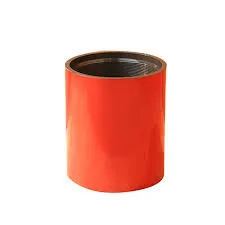- Afrikaans
- Albanian
- Amharic
- Arabic
- Armenian
- Azerbaijani
- Basque
- Belarusian
- Bengali
- Bosnian
- Bulgarian
- Catalan
- Cebuano
- Corsican
- Croatian
- Czech
- Danish
- Dutch
- English
- Esperanto
- Estonian
- Finnish
- French
- Frisian
- Galician
- Georgian
- German
- Greek
- Gujarati
- Haitian Creole
- hausa
- hawaiian
- Hebrew
- Hindi
- Miao
- Hungarian
- Icelandic
- igbo
- Indonesian
- irish
- Italian
- Japanese
- Javanese
- Kannada
- kazakh
- Khmer
- Rwandese
- Korean
- Kurdish
- Kyrgyz
- Lao
- Latin
- Latvian
- Lithuanian
- Luxembourgish
- Macedonian
- Malgashi
- Malay
- Malayalam
- Maltese
- Maori
- Marathi
- Mongolian
- Myanmar
- Nepali
- Norwegian
- Norwegian
- Occitan
- Pashto
- Persian
- Polish
- Portuguese
- Punjabi
- Romanian
- Russian
- Samoan
- Scottish Gaelic
- Serbian
- Sesotho
- Shona
- Sindhi
- Sinhala
- Slovak
- Slovenian
- Somali
- Spanish
- Sundanese
- Swahili
- Swedish
- Tagalog
- Tajik
- Tamil
- Tatar
- Telugu
- Thai
- Turkish
- Turkmen
- Ukrainian
- Urdu
- Uighur
- Uzbek
- Vietnamese
- Welsh
- Bantu
- Yiddish
- Yoruba
- Zulu
Choosing the Right Nipple Tubing for Optimal Seating Performance in Applications
Understanding Seating Nipple Tubing A Comprehensive Guide
Seating nipple tubing plays a critical role in various industries, particularly in oil and gas, where the integrity of wellbore systems is paramount. This tubing serves as a connection point within the well, often functioning as an anchor or support structure for other equipment. In this article, we will explore the purpose, construction, applications, and installation of seating nipple tubing, providing a thorough understanding of its significance.
What is Seating Nipple Tubing?
Seating nipple tubing is a specialized type of pipe designed to facilitate the placement and operation of downhole tools, such as pumps, valves, and other equipment used in the extraction and management of resources. The term nipple refers to the short length of pipe that adheres to the shape needed for connection purposes. These pieces of tubing often have a threaded or flanged end, allowing easy attachment to various tools while ensuring a secure fit that can withstand the rigors of subsurface operations.
Purpose and Functionality
The primary function of seating nipple tubing is to act as a stable point for the attachment of downhole equipment. When a tool needs to be deployed, the seating nipple provides the necessary anchoring mechanism, allowing for reliable operation and less wear on the equipment. In oil and gas applications, for instance, these nipples are used to support essential tools in production and intervention processes, ensuring that they remain positioned securely during fluctuating pressures and temperatures.
In addition to anchoring equipment, seating nipple tubing can also facilitate the sealing of certain ingress points along the wellbore. Proper sealing minimizes the risk of fluid or gas leaks, which can lead to operational inefficiencies, environmental concerns, and safety hazards.
Construction Materials
Seating nipple tubing is typically constructed from high-strength materials that can endure the challenging environments found deep underground. Common materials include carbon steel, stainless steel, and specialized alloys designed for high-pressure applications. The choice of material often depends on the specific requirements of the well, including the temperature, pressure, and the type of fluids being managed.
Applications in Oil and Gas
In the oil and gas industry, seating nipple tubing finds its applications in various critical processes
seating nipple tubing

1. Production Seating nipples are crucial in the deployment of production tubing and are often used to connect valves and pumps to other subsurface equipment. This ensures that the flow of oil or gas is managed effectively and efficiently.
2. Well Intervention During well interventions, seating nipple tubing is instrumental in providing access points for tools used to inspect, clean, or repair equipment within the well. Maintaining solid connections minimizes operational downtime and reduces the risk of tool entanglements.
3. Pressure Management By facilitating the installation of pressure control devices, seating nipple tubing helps operators manage pressure fluctuations in the well. This functionality is central to ensuring safety and optimizing resource extraction.
Installation Process
Proper installation of seating nipple tubing is critical to its performance and longevity. The process generally involves several key steps
1. Preparation Prior to installation, the area must be assessed, and the equipment should be cleaned to ensure that no contaminants interfere with the seal.
2. Connection The mating end of the seating nipple is typically threaded. Proper alignment and torque specifications are essential to create an effective seal.
3. Testing After installation, various tests, such as pressure testing, are conducted to confirm the integrity of the connections and ensure that there are no leaks.
Conclusion
Seating nipple tubing may seem like a singular, minor component within the vast system of wellbore operations, but its significance cannot be understated. From providing mechanical support to enhancing the safety and efficiency of various applications, it plays a pivotal role in oil and gas extraction and management. As technologies evolve and the demand for resources increases, the importance of reliable and effective seating nipple tubing will remain central to the industry. Understanding its functionalities, construction, and applications enables engineers and technicians to make informed decisions that enhance overall operational success and safety standards.
-
Tubing Pup Joints: Essential Components for Oil and Gas OperationsNewsJul.10,2025
-
Pup Joints: Essential Components for Reliable Drilling OperationsNewsJul.10,2025
-
Pipe Couplings: Connecting Your World EfficientlyNewsJul.10,2025
-
Mastering Oilfield Operations with Quality Tubing and CasingNewsJul.10,2025
-
High-Quality Casing Couplings for Every NeedNewsJul.10,2025
-
Boost Your Drilling Efficiency with Premium Crossover Tools & Seating NipplesNewsJul.10,2025







